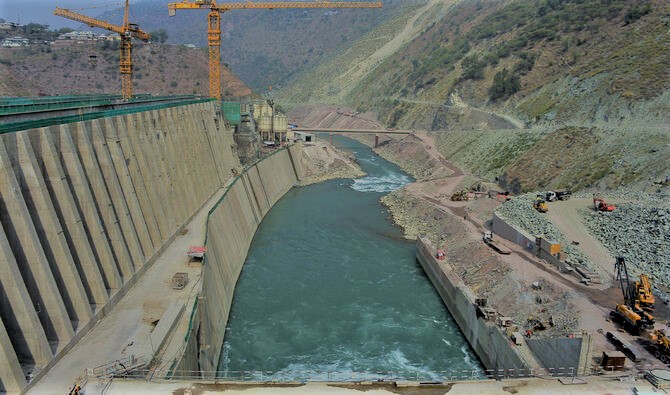SRINAGAR: In a significant move, India has started work to enhance the reservoir capacity at two hydroelectric projects in the Kashmir region, sources familiar with the situation have confirmed. This development comes after a recent suspension of a key water-sharing agreement with Pakistan, a decision sparked by heightened tensions between the two nations.
The work marks India’s first move outside the framework of the Indus Waters Treaty, which has governed water distribution between India and Pakistan since 1960, enduring despite multiple wars and ongoing conflicts. However, following a deadly attack in Kashmir last month that claimed 26 lives—two of the attackers were identified as Pakistani—the Indian government suspended the treaty, which historically ensured water for 80% of Pakistani farms.
Pakistan has strongly condemned this move, threatening international legal action and warning that any disruption of water flow from India would be considered an “act of war.” The suspension has escalated an already tense situation, as water from rivers flowing through India is crucial for Pakistan’s irrigation and power generation.
On May 1, India’s state-run NHPC Ltd initiated a “reservoir flushing” process to remove sediment from the Salal and Baglihar hydroelectric projects, marking the first such operation since the projects were established in the late 1980s and early 2000s. This procedure, which involves temporarily emptying reservoirs, is essential for improving the efficiency of power generation and preventing damage to turbines. The operation lasted for three days, and locals living along the Chenab River noticed the water release.
The move is not expected to immediately threaten Pakistan’s water supply, but it could set a precedent for other projects in the region, which might eventually impact downstream countries. Flushing operations, though necessary for maintaining optimal power output, involve the wastage of water and typically require notifying neighboring countries to avoid flooding risks.
While the flushing process at the Salal and Baglihar dams is a significant development, it also highlights the strained relationship between India and Pakistan, particularly over water issues. The 1960 Indus Waters Treaty, which divided water rights between the two countries, has long been a source of contention. Despite the treaty’s protections, the political climate surrounding it has shifted, with India asserting more autonomy in managing these resources.
India’s water minister has recently expressed intentions to ensure “no drop of the Indus river’s water reaches Pakistan,” signaling a departure from the treaty’s terms. Meanwhile, former officials, including Kushvinder Vohra, a retired head of India’s Central Water Commission, have suggested that India now has greater freedom to pursue its hydropower projects.
The ongoing dispute, which also involves the Kishenganga and Ratle hydroelectric plants, has led both countries to engage with international bodies like the Permanent Court of Arbitration. As tensions continue to rise, the future of the Indus Waters Treaty remains uncertain.








